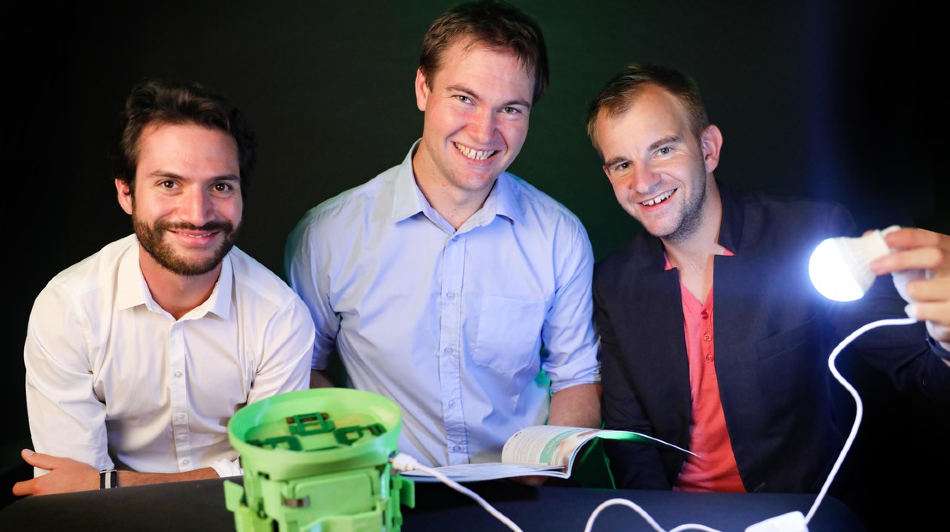Jan 14 2020
More than a billion people around the world are living without electricity. The problem is more serious in rural regions of Sub-Saharan Africa, where many cell phone owners are not able to charge their devices at home and a majority of the families spend their evenings in total darkness.
 EPFL startup hiLyte has developed an eco-friendly battery that will allow people in Sub-Saharan Africa to light their homes and charge their cell phones. The technology is currently being tested by families in Tanzania. Image Credit: EPFL.
EPFL startup hiLyte has developed an eco-friendly battery that will allow people in Sub-Saharan Africa to light their homes and charge their cell phones. The technology is currently being tested by families in Tanzania. Image Credit: EPFL.
Two graduates from EPFL’s School of Engineering (STI) have established a startup called hiLyte that has successfully built a clean, low-cost battery using coffee filters, water, carbon felt, and iron. Through a single charge, the novel battery can charge a cellular phone or power an LED bulb for a period of 5 hours. After the battery is used up, the liquid within it can be safely discharged into the environment.
Twelve prototypes, produced and distributed via a local branch controlled by local employees, are presently being tested in families.
Our technology has the potential to change people’s everyday lives. For one of the pilot families, the battery allowed their daughter to study in the evening. Having light can also transform the way people interact, bringing socialization opportunities for isolated and vulnerable families.
Briac Barthes, Co-Founder, hiLyte
Barthes holds a Master’s in Mechanical Engineering.
An Alternative to Kerosene
At present, people living in Tanzania’s rural areas are using kerosene lamps to light up their houses when it becomes dark. However, kerosene is a highly flammable and costly fuel that releases dangerous soot particles upon burning.
Breathing kerosene smoke in a confined space for five hours is as bad for your lungs as smoking two packs of cigarettes.
Briac Barthes, Co-Founder, hiLyte
Iron Foil, Coffee Filters, and Carbon Felt
The latest four-compartment, reusable battery resolves most of these issues. The user can produce the required power by simply reloading the unit with consumables.
Initially, coffee-filter paper, carbon felt, and sheets of iron foil are inserted via the four doors. The user then pours a solution of iron sulfate powder and water inside the battery. While the liquid saturates into the carbon filter, it gradually dissolves the iron foil.
This procedure discharges electrons, thus producing electricity. This power can be harnessed by users by simply connecting a cell phone or lamp to the built-in USB port of the battery. The reaction creates iron 2 sulfate—an innocuous liquid that is extensively utilized as an agricultural fertilizer.
The cost of the battery is approximately half that of a kerosene lamp. The unit itself is retailed at 12 dollars, whereas the cost of the consumables is only 12 cents for each recharge.
Once recharged, the battery produces five hours’ worth of electricity.
Briac Barthes, Co-Founder, hiLyte
At present, the company is concentrating on Tanzania but intends to ultimately expand into other marketplaces.
A green battery for home use in rural Africa
Video Credit: EPFL.